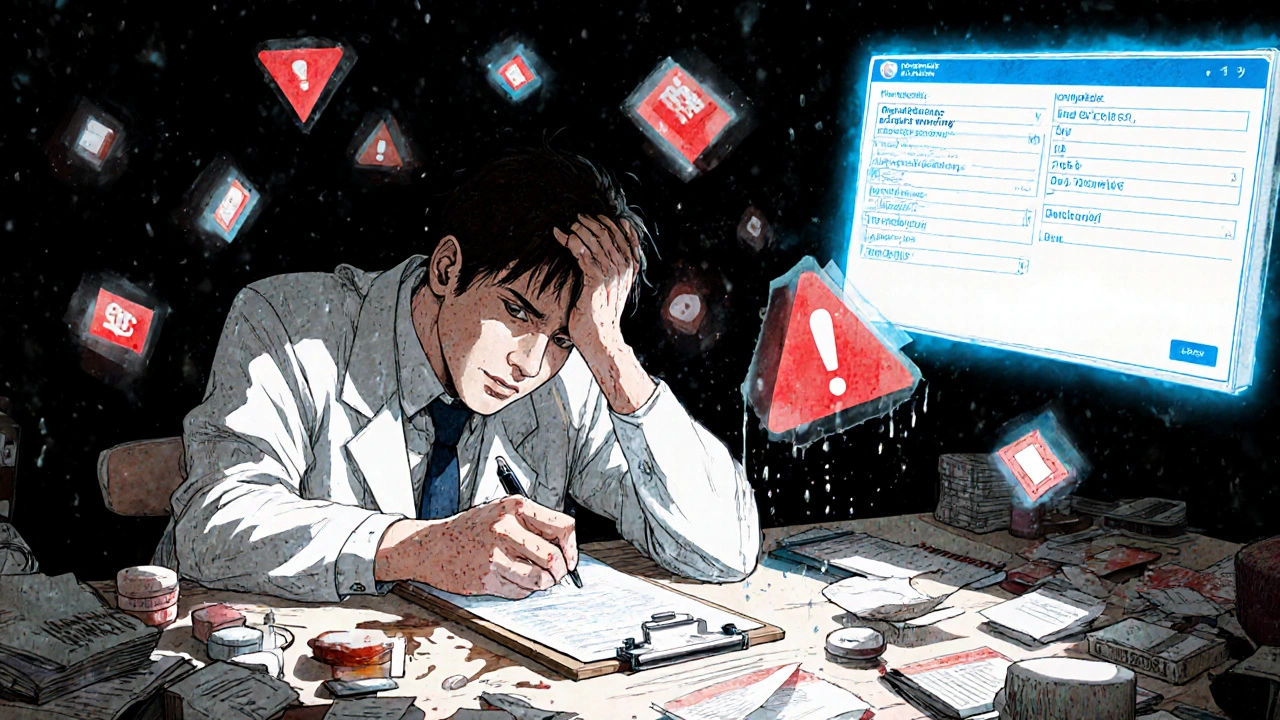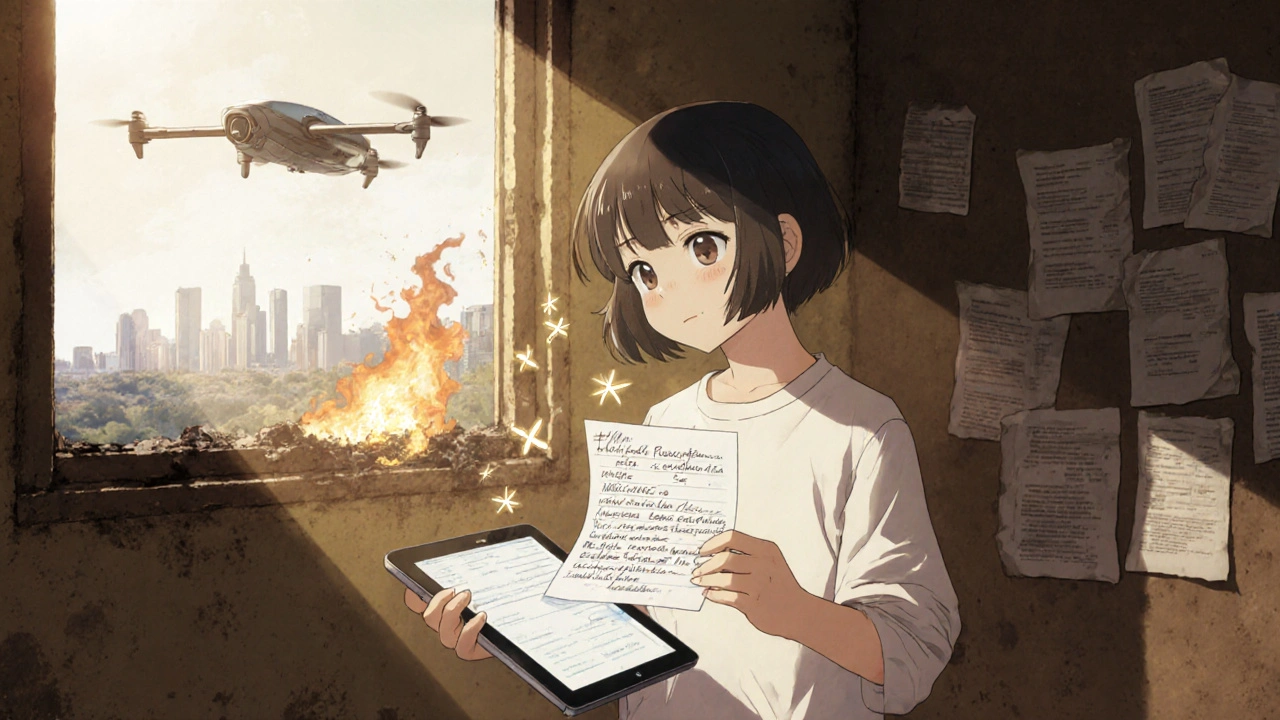Handwritten prescriptions are still killing people - and it’s not because doctors are bad writers
Imagine this: a patient gets a prescription for metoprolol, a heart medication. The doctor writes it by hand. The pharmacist sees "metoprolol" - but it looks like "metoprolol" crossed out and scribbled over with something that could be "metoprolol" or maybe "metoprolol". They call the clinic. The doctor’s assistant says, "Oh, it’s 50 mg twice daily." But the patient’s chart says they’re allergic to beta-blockers. The pharmacist hesitates. The patient waits. Hours pass. This isn’t fiction. It happens every day - and it’s one of the leading causes of preventable death in hospitals.
In the U.S. alone, around 7,000 people die each year because someone couldn’t read a doctor’s handwriting. Another 1.5 million suffer harmful drug reactions from errors tied to messy scripts. That’s not a statistic. That’s your neighbor. Your parent. Your sibling. And it’s been going on for decades.
Why handwriting still exists - and why it’s dangerous
Doctors aren’t lazy. They’re overwhelmed. A typical GP sees 30-40 patients a day. Each visit lasts 10-15 minutes. Between taking notes, answering questions, and documenting in an EHR, there’s no time to write neatly. So they scribble. They use abbreviations like "QID" (four times a day) or "AC" (before meals) - terms that sound fine until they’re misread as "QD" (once daily) or "AD" (right ear). The Joint Commission banned these abbreviations in 2004, but they’re still everywhere.
One 2005 study in a British hospital found that only 24% of handwritten operative notes were rated as "excellent" or "good" by nurses and pharmacists. Nearly 40% were labeled "poor." That’s not just inconvenient - it’s life-threatening. A wrong dose of insulin, a misread antibiotic, a confused route of administration - all can turn a routine visit into an emergency room trip.
Pharmacists spend an estimated 150 million phone calls a year in the U.S. just clarifying prescriptions. Nurses spend an average of 12.7 minutes per illegible script trying to figure out what was meant. That’s 12.7 minutes not spent with a patient who’s in pain, not spent checking vitals, not spent teaching someone how to use their inhaler.
Electronic prescribing isn’t just better - it’s 10 times safer
In 2025, a major study in JMIR compared safety compliance between handwritten and electronic prescriptions. The results were shocking:
- Handwritten prescriptions: 8.5% compliance with safety standards
- Electronic prescriptions: 80.8% compliance
That’s not a small improvement. That’s a revolution.
E-prescribing eliminates handwriting entirely. No more guessing. No more calls. No more delays. The system auto-checks for allergies, drug interactions, and correct dosages. It forces the prescriber to pick from a standardized list of medications - no more "give him the blue pill" or "the one for diabetes." It includes the patient’s full name, date of birth, and exact dosage with units (mg, mcg, mL). It even blocks dangerous abbreviations.
Veradigm’s data shows e-prescribing cuts errors from illegibility by 97%. That’s not a marketing claim. That’s what happens when you replace pen with software.

But e-prescribing isn’t perfect - and here’s why
Some doctors hate it. They say it takes longer. They get stuck in pop-up alerts. One study found that clinicians override safety warnings up to 90% of the time - not because they’re reckless, but because they’re flooded with alerts. Too many "false alarms," and the system becomes background noise. That’s called alert fatigue. It’s a real problem.
Also, not every clinic can afford it. Setting up an e-prescribing system costs $15,000-$25,000 per provider. Training takes 8-12 hours. Integrating with existing electronic health records? That’s a nightmare for small practices. Some rural clinics still rely on paper because their internet is slow or their IT support is nonexistent.
And yes - even electronic systems can make mistakes. If a doctor picks the wrong drug from a dropdown list (say, lisinopril instead of losartan), the system won’t catch it. It’s only as smart as the person using it.
What’s being done - and what you can do
The U.S. government pushed hard for change. The Medicare Improvements for Patients and Providers Act of 2008 offered financial bonuses for doctors who switched to e-prescribing. The 21st Century Cures Act in 2016 made interoperability mandatory - meaning your prescription should follow you from clinic to pharmacy without hiccups.
By 2019, 80% of office-based providers in the U.S. were using e-prescribing. That number keeps rising. In the UK, NHS Digital has been phasing out paper scripts since 2018. By 2030, handwritten prescriptions will be a relic - like fax machines in hospitals.
But if you’re still in a place where paper is the norm, here’s what you can do:
- Ask for printed prescriptions - not cursive. Block letters are easier to read.
- Check the details - drug name, dose, frequency, route (oral, injection, etc.), and prescriber signature. If something’s missing, ask.
- Know your meds - if you’re prescribed something new, look it up. Don’t assume the pharmacist got it right.
- Use a pharmacy that calls the doctor - not all do. Choose one that takes the time to verify.
For clinics still on paper, simple fixes help. Use a 15-item checklist to audit prescriptions. Train staff to spot common errors. Encourage doctors to write one legible script per day as a habit. Small steps matter.

The future: AI and the end of handwriting
What if you could still write by hand - but a computer reads it perfectly?
Early AI tools for handwriting recognition are already hitting 85-92% accuracy in reading common drug names. In low-resource clinics, this could be a bridge. A doctor scribbles. A tablet scans. An AI converts it to text, flags errors, and sends it electronically. No full EHR needed. Just a phone and a camera.
But this isn’t a fix. It’s a stopgap. The real solution is still full e-prescribing. It’s faster, safer, and cheaper in the long run. The U.S. spends $20 billion a year on preventable medical errors. Most of that comes from avoidable mistakes - like bad handwriting.
By 2030, the last handwritten prescription in a major hospital will be a museum piece. And the patients who used to die from it? They’ll be alive - because someone finally stopped trusting pen and paper with their lives.
What patients and families need to know
You don’t need to be a doctor to protect yourself. Here’s your checklist:
- Always ask for a printed copy of your prescription - even if it’s electronic.
- Read it. Does it match what the doctor told you? If not, speak up.
- Don’t let a pharmacist fill a script without verifying the name and dose.
- If you’re unsure about a medication, call your doctor’s office - don’t guess.
- Keep a list of all your meds, including doses and reasons. Share it at every visit.
Medication errors are not accidents. They’re system failures. And the system is changing - fast. But you still have power. Your voice matters. Your questions save lives.
How many people die each year from illegible handwriting on prescriptions?
Approximately 7,000 people die each year in the United States due to medication errors caused by unreadable handwriting on prescriptions, according to data from the Institute of Medicine and Veradigm. These errors often involve wrong dosages, incorrect drugs, or misinterpreted instructions.
Are electronic prescriptions really safer than handwritten ones?
Yes. A 2025 study in JMIR found that electronic prescriptions had an 80.8% compliance rate with safety standards, compared to just 8.5% for handwritten ones. E-prescribing reduces illegibility-related errors by 97% and prevents dangerous drug interactions by auto-checking patient records.
Why do doctors still write prescriptions by hand?
Many doctors still use paper because of cost, time pressure, or lack of access to reliable e-prescribing systems - especially in rural or underfunded clinics. Some also feel electronic systems slow them down or create too many alerts. But adoption is rising rapidly, with 80% of U.S. providers using e-prescribing by 2019.
What should I do if I can’t read my prescription?
Don’t guess. Call your doctor’s office or pharmacy and ask them to verify the drug name, dose, frequency, and route. Never take a medication if you’re unsure. Pharmacists are trained to catch errors - use them as a safety net.
Can AI help read messy handwriting on prescriptions?
Yes. Early AI tools can interpret handwritten drug names with 85-92% accuracy, making them useful in clinics without full e-prescribing systems. These tools can convert scribbles into digital text and flag potential errors. But they’re a temporary solution - not a replacement for electronic prescribing.


Kelsey Veg
November 9, 2025 AT 07:56also lol at 'QID' - my grandma thought that meant 'quit immediately'.
Alex Harrison
November 11, 2025 AT 05:30Jay Wallace
November 12, 2025 AT 16:07And don’t get me started on the ‘alert fatigue’ excuse-your laziness isn’t a feature, it’s a bug.
Alyssa Fisher
November 13, 2025 AT 14:18It’s not about resistance to change. It’s about how deeply we’ve normalized preventable harm.
Alyssa Salazar
November 14, 2025 AT 14:06And yes, alert fatigue is real, but that’s a UX problem, not a systemic one. We can tune thresholds. We can use AI to triage alerts. We just need to stop treating tech as a burden and start treating it as a co-pilot.
Beth Banham
November 16, 2025 AT 12:15Brierly Davis
November 16, 2025 AT 16:17Switching to e-scripts isn’t optional-it’s a moral obligation. And if your clinic can’t afford it, we need to fund it. People’s lives aren’t budget line items.
Amber O'Sullivan
November 17, 2025 AT 16:21and yes i know its dangerous but so is bureaucracy
Jim Oliver
November 19, 2025 AT 08:31Also, AI handwriting recognition? Cute. It’s like using a Band-Aid on a severed artery.
Clyde Verdin Jr
November 19, 2025 AT 22:28So yeah, I’m mad. But also? I’m not surprised. This system is designed to fail. And the people who profit from it? They’re still writing checks.
Key Davis
November 20, 2025 AT 10:23Cris Ceceris
November 21, 2025 AT 18:47Maybe the real problem isn’t the pen. It’s the silence.